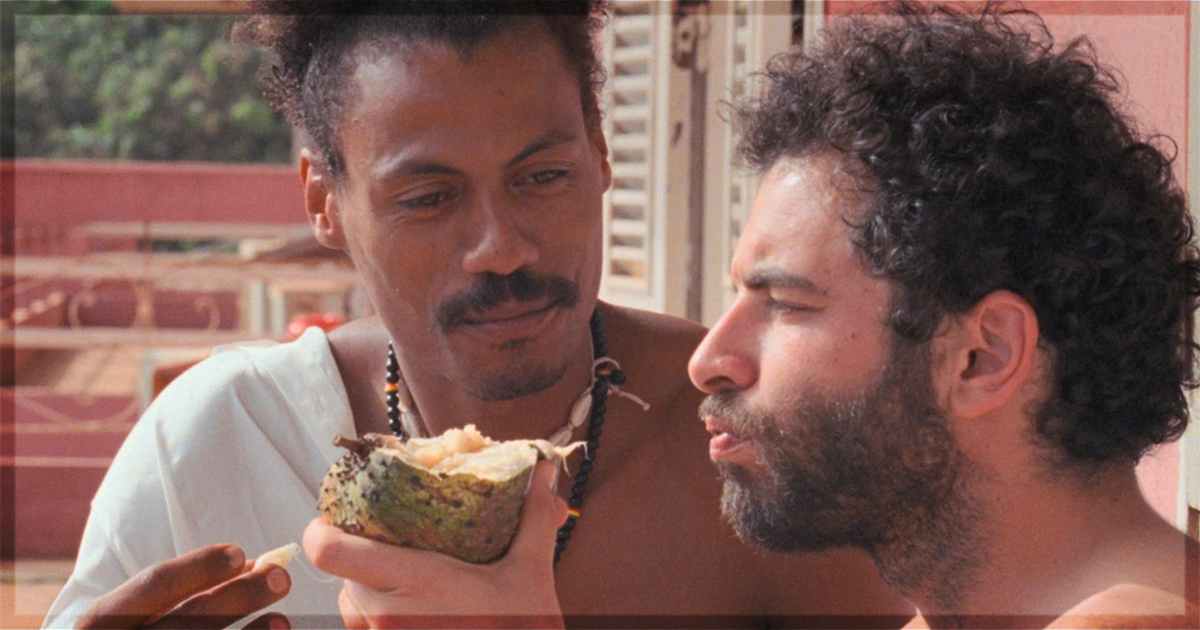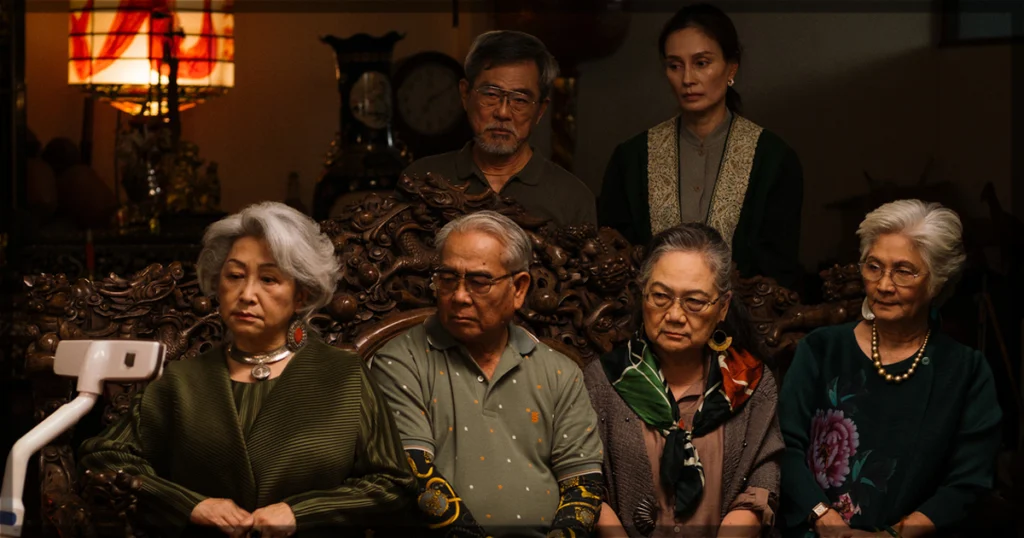The Portuguese director Pedro Pinho presents his latest film, O Riso e a Faca (I Only Rest in the Storm), at the Un Certain Regard section in this year’s Cannes Film Festival. The author’s last full-length feature, A Fábrica de Nada, had its premiere at the Quinzaine des Cineastes in 2017. His new effort is a two hundred and ten minutes drama about an environmental engineer, Sérgio (Sérgio Coragem), who migrated from Portugal to Guinea-Bissau. He needs to finalize an environmental report on the viability of building a road surrounding a river and villages. As he lives and discovers his new home, he befriends the Brazilian Guilherme (Jonathan Guilherme) and Diára (Cleo Diára). They are his guides to unveiling the town and its corruptive potential.
On the surface, O Riso e a Faca sounds like an exploration of a European white man discovering an exotic venue that needs colonizing to encounter civilization. Surprisingly, Pinho decides to criticize neo-colonialism from the inside out. He personifies the Portuguese colonial roots in Sergio’s complex development. The community around him judges and confronts him for his moral approach to everything. In this sense, the director displays the deconstruction of the white savior character. He finds out that there is nothing to save in that country, according to his pristine morality. Therefore, it provides the most fascinating clash between the European values displayed in him and the capitalist nature of his boss, who needs the report done before the rainy season. Hence, in a fascinating argument in a nightclub, the boss exposes his intentions of developing the villages. The crucial aspect of the dialogue is his confrontation with the Portuguese man. He states that he will progress like the Europeans, except fewer people are being explored and dying. The ongoing corruptive nature is a mirroring of the Portuguese history of violence.
Consequently, the trio relationship reflects the cultural clashes between them. In a joke, Diára bets with Guilherme on who will go to sleep with the foreigner first. They acknowledge and understand that his fascination and sexual desire towards them rely on his pre-existing visions and concepts of black bodies. It is a subtextual but nuanced discussion of the main character’s desires. Also, Diára is the most engaging character in the supporting cast for the unpredictability of her actions. Cleo Diára delivers a majestic performance. She is sexy, mysterious, and fierce, with a bar in her house that unites her community. Also, her place is another engaging discussion about gentrification and land property, as the land owner asks for the place back. These scenes demonstrate Pinho’s ability to question the European vision of the African continent.
Even though he achieves his intentions in expanding his conversations on colonialism, O Riso e a Faca reaches a point to justify tbe diverse of the thematic axes of his script. Pinho presents multiple concepts that slowly unveil and develop. It ends on a tiring note; the film is three and a half hours long with dense topics and dramatic situations. The scenes have long takes, and the director does not worry about cutting slower scenes in the desert or the villages. It takes its time to establish a grander sense of divergent culture. The main character observes the place as an unknown civilization. In this sense, Pinho thrives in his approach to the story; we understand the political organization of that region through NGOs, such as the one building the road, and venture capitalists. Still, it is a demanding enough experience.
Ultimately, another crucial element is the 35mm cinematography by Ivo Lopes Araújo. It captures the grandeur of the desert, villages, and cities. The neon lights frame characters looking forward to enjoying life and questioning its meaning. The most existential scenes have neon lights, which juxtapose with conversations about labor exploitation, sexual work, and the Black foreign experience in Africa. Visually, life is vivid and joyful, the solar color grading expands a contradictory emotional state. The contradictions are present in the camera choices and characters’ actions. Lopes Araújo delivers a complex and varied work to an intricate story. The grainy framings also contribute to the sexy scenes that use the film to demonstrate the sexual needs of those individuals. Also, he designs a beautiful sequence featuring the song that names the film, O Riso e a Faca, by Tom Zé. They sing their lungs out on the empty road with a rising sun behind them. It is a gorgeous composition that presents the bittersweetness in those characters.
O Riso e a Faca (I Only Rest in the Storm) is an overly long film about a man confronted by society for his ideas and morals. Still, it is a sexy, dense, and complex discussion on colonization and progress.
O Riso e a Faca (I Only Rest in the Storm) recently played at the Cannes Film Festival.
Learn more about the film at the Cannes site for the title.
You might also like…
‘A Useful Ghost’ Movie Review: Ratchapoom Boonbunchachoke’s Debut


